Whatever type of traveller you are, you will love being in Nepal. Choosing the best time for Nepal Tour Packages shapes your days in mountainous areas and in towns.
Nepal is influenced by different weather, holiday periods and trekking conditions depending on the season. That’s the reason choosing the best timing for your Nepal trip package is important.
In this blog, we’ll discuss the effects of each season, so you know which travel season suits you best for Nepal Tour packages.
Overview of Different Seasons in Nepal
Spring, Summer (also called Monsoon), Autumn and Winter are found in Nepal every year. Each season in Nepal offers great travel opportunities for people who like to explore.
Nepal in spring is the season when rhododendrons produce their beautiful flowers, and it continues through May. It’s usually warm and pleasant, so you can enjoy all the hiking and sightseeing you want.
Summer or monsoon rains fall in June and August, when the rains are often very strong. Right now, it is hot and humid, and you can’t always see the mountain views because there are clouds all around them. The valleys and forests are particularly lovely and colourful this time of year.
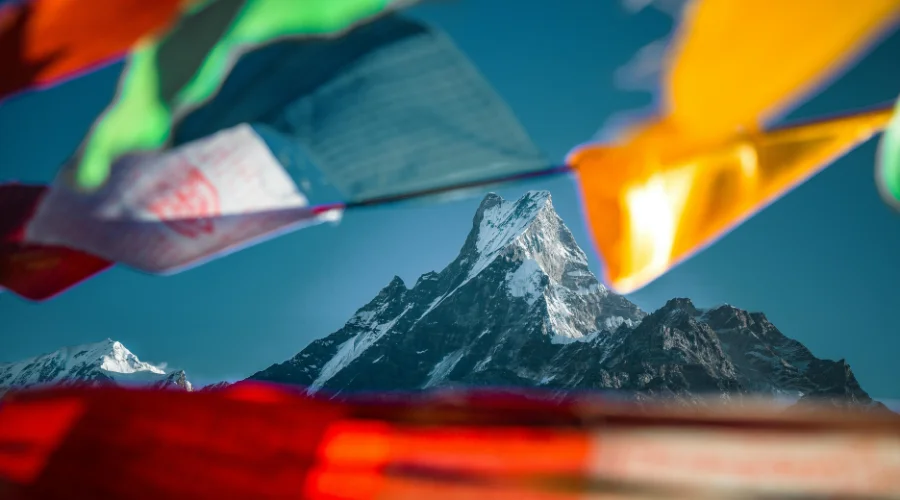
September, October and November are when travelers can experience Nepal at its finest. Our weather is nice; the air is pure and it’s clear to see the stunning mountains. The country’s main festivals, Dashain and Tihar, both take place during this season.
With temperatures falling below zero, from December to February in Nepal, the mountains can be very cold.
Even though trekking gets more challenging with snow at higher levels, you can always experience culture and nature on tours in Kathmandu Pokhara or Chitwan at any time of year.
Also, have a look at the Best Nepal Tour.
Spring Season in Nepal
Spring in Nepal is the best season for those who would like to visit Nepal. This time of year, is filled with sunshine, clear days and lovely views from the mountains.
It is the best time for Nepal Tour Packages to explore nature, mainly by hiking. The springtime sees lots of explorer’s journey to Everest Base Camp, Annapurna Base Camp, Langtang Valley and Ghorepani Poon Hill.
Spring is a special time for Nepal’s people since it is when the rhododendron flower starts to show. Along the main path, rhododendron in red, pink and white colors surrounds you which makes the whole journey very beautiful.
Nepal in Spring is a fantastic time to visit cities for travel. Kathmandu Valley, ancient Bhaktapur, and Patan are on your list, along with a peaceful Phewa Lake boat trip to Pokhara.
If you love being with wildlife and nature, Chitwan National Park is the best national park for enjoying a jungle safari.
Because of this, spring helps travelers combine hiking, learning about local culture and enjoying the environment. Visitors finding themselves in Nepal for the first time now have an excellent opportunity to make the most of their time here.
Summer Season in Nepal
June to August are the wettest and most humid months in Nepal, but all the green makes the landscape lovely.
Nepal’s monsoon season begins in June and ends in August, so all summer throughout the country is damp. This season brings the heaviest rains to the hills and mountains of Nepal.
As it is often raining, the paths in the park can get very slippery, hiking is tough and it’s usually too cloudy to see the mountains.
There’s something charming about this time of year. Thanks to rainfall, our forests turn green, the air is breathed with freshness and many plants begin to flower.

There is plenty of animal and plant life in the country, and you can find lots of amazing water in the rivers and waterfalls. If you like nature, you can have some unusual moments during the monsoon season in Nepal.
You’ll experience fewer crowds when travelling during the monsoon season and can explore the sites calmly. Trekking is not recommended at high altitudes, but you may visit Kathmandu, Pokhara and Lumbini.
Rain doesn’t stop you from exploring the culture, religion and food culture in the city.
You should find it safe to go walking in Upper Mustang and Dolpo, as they are not very affected by monsoon rain.
Autumn Season in Nepal
Autumn is the season when most travelers come to Nepal. From mid-September through to early December, the weather is usually pleasantly dry and clear.
The sky is clear, the air smells great, and the Himalayas look wonderful today. Spring is the best season for photographers, hikers, explorers and sightseers in this area.
The best time to trek in Everest Base Camp, Annapurna Circuit, Manaslu Circuit and Langtang Valley is from the coming Autumn days up to mid-December.
Autumn in Nepal is a calm time, attracting plenty of hikers to the trails. During fall, with golden and colourful hills, you will enjoy the view from your travels.
In this Autumn season, the country is filled with many festivals. This is the season for the main celebrations, Dashain and Tihar.
Decorations, traditional dancing, dining and festive celebration are part of what happens all around the country during these festivals. It is an excellent opportunity to find out about Nepali culture and meet the locals.
Rhythmic festivals and their bright lights character cities such as Kathmandu Chitwan and Pokhara Tour. During your holiday, visit temples, discover new aspects of Nepal, and stroll through the peaceful lakes.
Many travellers come to Nepal in autumn to enjoy its nature and culture.
Winter Season in Nepal
Nepal is braced for winter from December to February. During this season, Himalayan temperatures decrease quite quickly.
Trekking at the high points becomes nearly impossible, as there is usually lots of snow there. Still, the area below and its towns are fine for both experiencing events and having limited adventures.
An advantage of travelling in winter is that there aren’t a lot of people around. You don’t meet lots of tourists while visiting the attractions.
On clear sky days, it’s possible to notice the snowy mountains, mostly from Nagarkot, Bandipur and Sarangkot, near Pokhara.
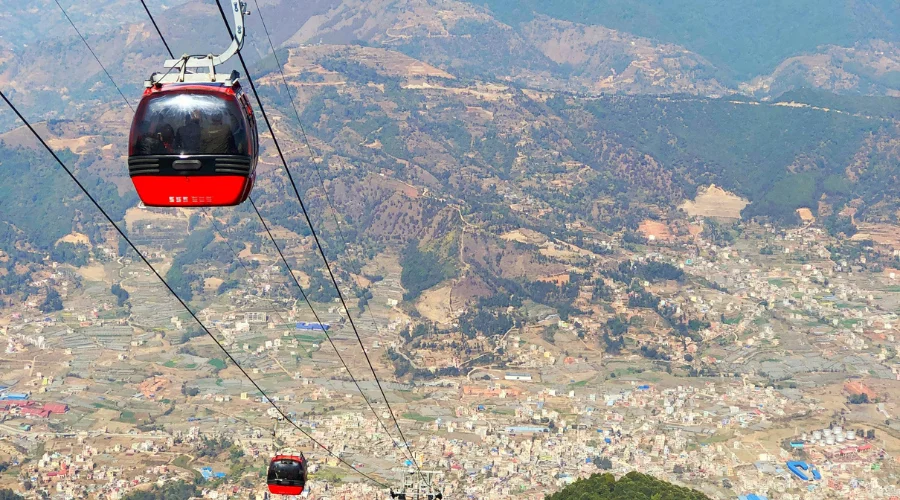
Cold weather in winter is the time to dive into Nepal’s culture. All these locations are places you would certainly wish to visit Kathmandu Durbar Square, Patan, Bhaktapur and Lumbini, the site where Lord Buddha was born.
You will find a great deal of history, art and architecture in these locations. People who enjoy mild weather can enjoy a wonderful jungle safari at Chitwan National Park.
While it’s not perfect for high mountains, if you have winter gear, you can finish the Ghorepani Poon Hill Trek, Nagarkot hike, or Australian Camp. Travel during winter in Nepal for a peaceful and cultural trip.
What does Nepal look like each Month?
Nepal experiences different weather, temperatures and landscapes during each season. So, we have made a detail of each season in Nepal below:
Nepal in January:
January is the month when the weather drops the most in Nepal. The temperatures range between 2°C (36°F) and 15°C (59°F), but they become much colder the higher you go into the mountains.
Since there are usually no clouds, you can take in the unique attractions of Kathmandu, Bhaktapur and Pokhara. Both Chitwan and Bardiya National Parks are great places for safaris, given their usual cooler and drier air.
Nepal in February:
The weather in February in Nepal gets warmer but remains very chilly. Both the days and the temperature are getting longer and by daytime, the city is up to 18°C (64°F).
It’s a good time for hiking, as the routes to Nagarkot and Dhulikhel have become shorter.
Spring flowers are everywhere at this point, and there are fewer festivals, meaning you’ll meet fewer tourists.
Nepal in March:
As spring appears in March, rhododendron plants come alive and colour the hills and mountains of Nepal.
It gets as warm as 20°C (68°F) in Kathmandu. Because it’s both sunny and cool, October is a wonderful time for hiking excursions.
Many travelers are now selecting the Everest Base Camp, Annapurna Circuit and Langtang trails. While tourists are on the rise, authorities can still cope with the larger numbers. You will find plenty of amazing temples and cultural sights on cultural tours.
Nepal in April:
April is a great time to go on a trip to Nepal. Between 20°C and 25°C (68°F to 77°F), the days are warm in the valleys.
Rhododendrons are spreading colourful flowers on trekking routes right now. Sunny and clear days reveal one of the world’s greatest mountain scenery, great for photographers.
Paragliding, rafting and mountain biking are luring lots of people. Bisket Jatra in Bhaktapur sets a lively cultural stage for everyone.
Nepal in May:
Currently, spring finishes and the warmer season starts, thanks to May. Kathmandu sees its hottest temperatures reach up to 28°C (82°F) with rising humidity.
You will find occasional rain, yet hiking is still enjoyable at greater heights.
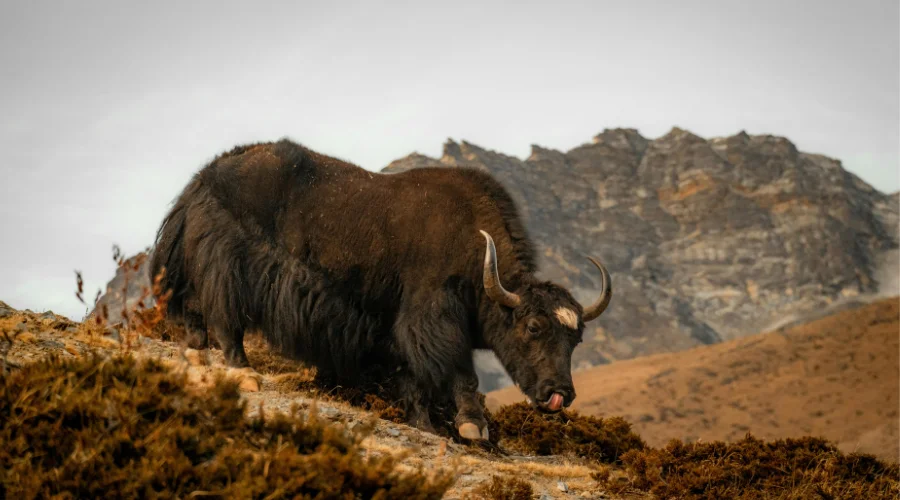
Hot and humid weather begins in the lower regions, so it’s best to plan for this. Although this month invites adventure sports and sightseeing, it is a time when the weather gets hot for anyone trekking.
Nepal in June:
During June in Nepal, the monsoon is starting, and rains cover the hills and mountains more often. Kathmandu has temperatures that fall between 23°C and 30°C (73°F and 86°F).
Slippery paths and the danger of landslides can make trekking unsafe, so many treks are temporarily unavailable or harder to get to.
But in June, the country gets even greener, rivers rise, and waterfalls look fantastic. At this time, visitors can appreciate cultural sites in the lowlands without the usual hustle and bustle.
Nepal in July:
July in Nepal is when monsoons are most intense. Heavy and continuous rain brings inconveniences to traveling and to activities outside. Most people do not hike, as there are lots of wet, slippery trails and a risk of landslides.
Besides, July presents an excellent chance for visitors wanting to participate in city culture, try indoor attractions or experience animals as they venture for food in Bardiya and Chitwan National Parks.
Nepal in August:
Nepal in August maintains a rainy pattern, and showers are usually heaviest in the afternoons and in the evening hours.
Rivers flood their banks and become less safe, so ocean rafting on the Trishuli and Bhote Koshi is only recommended with skilled guides.
Everything looks lush and green, and waterfalls are reaching their highest levels. Cultural tours and visits to museums, temples and gallery are a favorite choice. Because tourists visit here only in small numbers, prices for travel are lower.
Nepal in September:
During September, the monsoon season is over, and autumn begins. Since it is drier than usual, the skies are sunny. Kathmandu’s climate is comfortable because temperatures are close to 25°C (77°F).
The beginning of this month sees the best hiking weather and amazing views of the mountains in Nepal. Indra Jatra is a festival where guests get to experience Nepalese culture.
Nepal in October:
Tourists come to Nepal at any time, but the number reaches its peak in October. Outside it’s sunny, the weather is dry and it’s quite cool. In the afternoon, temperatures generally lie between 20°C and 23°C (68°F and 73°F).
The great visibility encourages people to come here for trekking, mountain flights and more.
Big events in Nepal this month include Dashain, the leading festival and Tihar, known as the Lights Festival. Since lots of people come to Nepal, you should reserve your room before your trip.
Nepal in November:
Nepal in November offers a continuation of nice, stable and clear days. During this period, you should expect temperatures of 15°C to 20°C (59°F to 68°F).
You have wonderful opportunities to go trekking, explore culture, enjoy safaris or partake in adventure sports this month.
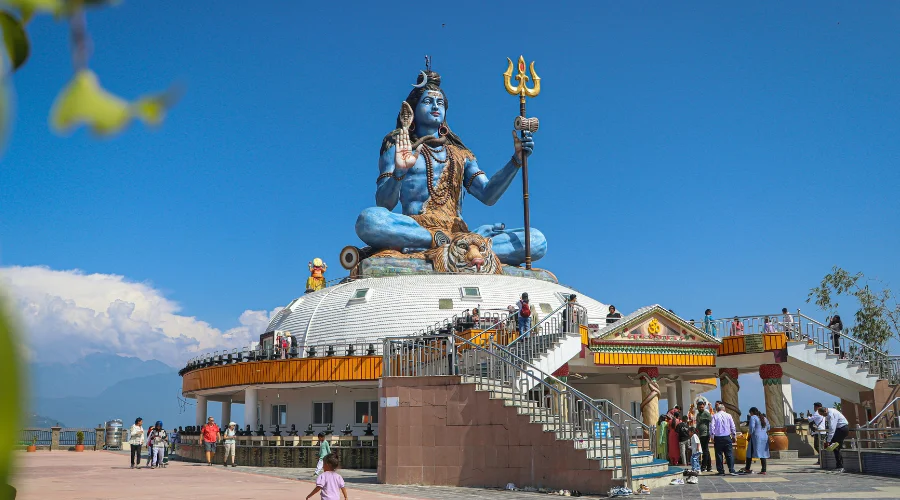
You can see beautiful mountains all around and the paths here are without risk. Though November has fewer tourists than did October, the amount is still quite high.
Nepal in December:
Winter hits Nepal in December, so mornings and evenings are cold, and snowfalls occur in mountain areas where it may become very cold at night. Temperatures in Kathmandu range from 2°C to 15°C.
While lower-altitude tours are still a pleasure, snow blocks some high-altitude trekking spots. You can still book a wildlife safari, and throughout the holidays, cities are decorated and festive.
Best Time for Trekking in Nepal
Since trekking is so popular in Nepal, your trip will be more enjoyable if you pick the r best time for Nepal Tour Packages.
While trekking is not always possible all year, spring (March to May) and autumn (September to November) are when the conditions are best.
The best time for trekking to Nepal is March through May and again in September and November.
Everything is clear and bright today and the scenery really attracts attention here. Mornings and afternoons are ideal for walking outside when it’s this temperature.
The Everest Base Camp Trek and Manaslu Circuit trails are best enjoyed during spring and autumn. Several green forests, lovely springtime rhododendrons and great views of Annapurna and Dhaulagiri make the area attractive.
Between March and May and from September through November, the short Langtang Valley Trek stays your top pick. It takes you past forests, charming villages and lets you see snow-covered mountains.
With rain being rare in their area, both Upper Mustang and Dolpo Treks are still great destinations if it’s raining elsewhere.
Those climbing at high altitudes from December to February should take extra care due to difficult snowy and cold conditions. Although there are many rules now, you can still go on hikes like Ghorepani Poon Hill and Nagarkot.
Basically, scheduling a big hike in Nepal for spring or autumn gives you a chance to enjoy good weather, beautiful mountain scenery, and safe travel on the paths.
Best Times for Cultural and Heritage Tours in Nepal
If you plan to see Nepal’s cultural and heritage highlights, visit during spring or autumn. If you come around this time, you’ll have clear skies and nice weather to enjoy sightseeing in Kathmandu, Bhaktapur and Patan.
You may want to explore Kathmandu Durbar Square, Pashupatinath Temple and Boudhanath Stupa, along with several old temples and palaces when visiting Kathmandu.
Because spring and autumn are mild, you can enjoy both the city’s historical sights and busy streets free from rain wetting you or cold winds.
Old buildings, interesting local traditions and great festivals are what characterize Bhaktapur and Patan. These two autumn festivals are wonderful chances to see the cities bursting with bright events, lots of dancing and cultural traditions.
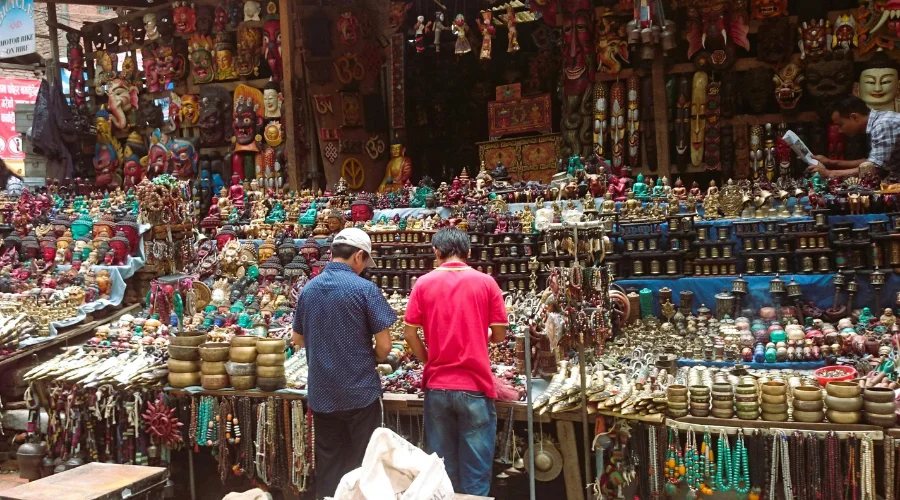
These places look especially lovely in the spring when the rhododendron flowers make everything around them even more beautiful.
Interested in Buddhist culture? Traveling to Lumbini, Lord Buddha’s birthplace, is made more comfortable by the nice weather in these months.
During the winter, fewer people visit cultural places, and the atmosphere is generally peaceful and quiet, even if it’s cold in the cities. Rain that often occurs during the monsoon season can limit your travel plans to some places.
Best Time for Adventure Activities in Nepal
Depending on the weather, you should pick the appropriate adventure activities when you visit Nepal. We’ll walk you through some useful tips on when choosing the most convenient time for adventure tours.
You should try paragliding in Pokhara during both spring and autumn, so that’s March to May and September to November.
The weather will be fair; the sky will stay blue and there will be good winds for your safe and enjoyable fun over the lake and around the mountains.
Rafting takes place from June to August, the heart of monsoon season and continues even through the first part of autumn when river water levels are highest.
The excitement outdoor enthusiasts find in the Trishuli, Bhote Koshi, and Sun Koshi Rivers come from the rapids. Late autumn and spring are better times to try gentle river rafting.
The months from October to March offer the best conditions for wildlife trips in the two national parks. Animals become thirsty in such hot and dry weather, so it’s easier to find them.
Spring and autumn are the nicest times for both bungee jumping and zip lining, although you can do them at any time of the year.
If you want your trip with Mountain Bike or Rock Climb to be warm and dry, book it in spring or fall.
Off-Season Travel: Should You Consider It?
Going to Nepal at times when most tourists avoid it such as June to August or December to February, often rewards visitors with great deals.
If you’d rather travel with fewer people, enjoy lower costs and have a calmer experience, the off-season fits your needs.
Monsoon season makes Nepal turn green and less crowded, as many travellers stay away. If you like to travel on a budget, this is an ideal moment because prices go down for both accommodation and air travel.
But heavy rains often result in landslides that hamper trekking, meaning that outdoor activities are mostly cancelled. Winter brings stillness and calm to most urban and lower areas.
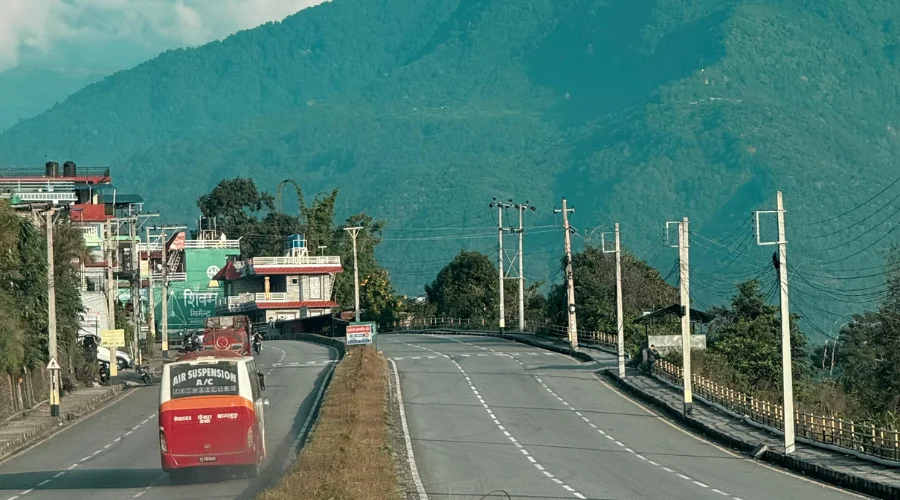
It is a perfect time to visit important cultural sites, go on safari and discover heritage locations without the normal crowds. Just keep in mind that it can be cold at this time and not all areas are accessible by car.
For people looking to save money and enjoy Nepal off the tourist path, off-season travel is recommended.
Final Thoughts: Pick the Season That Match Your Way of Traveling
Nepal is a great place to visit any time of year because there’s something unique to do in each season. You will see the most popular mountains in their full splendour if you plan your trip between spring and autumn.
For anyone who likes visits to locales and taking part in festivals, the best weather and activities can be found in autumn and spring.
If having more space and spending less is what you seek, choose the off-season, but be prepared for some difficult weather. Culture enthusiasts find winter very enjoyable, and the monsoon season makes Nepal look gorgeous and green.
Consider if you’re after adventure, nature, different cultures or budget options and travel at the right time. You can expect to be greeted with kindness and unforgettable moments at any time of year.
Send an Enquiry
Error: Contact form not found.
© 2025 - Himalayan Trekking and Tours (P) Ltd. All Rights Reserved.

